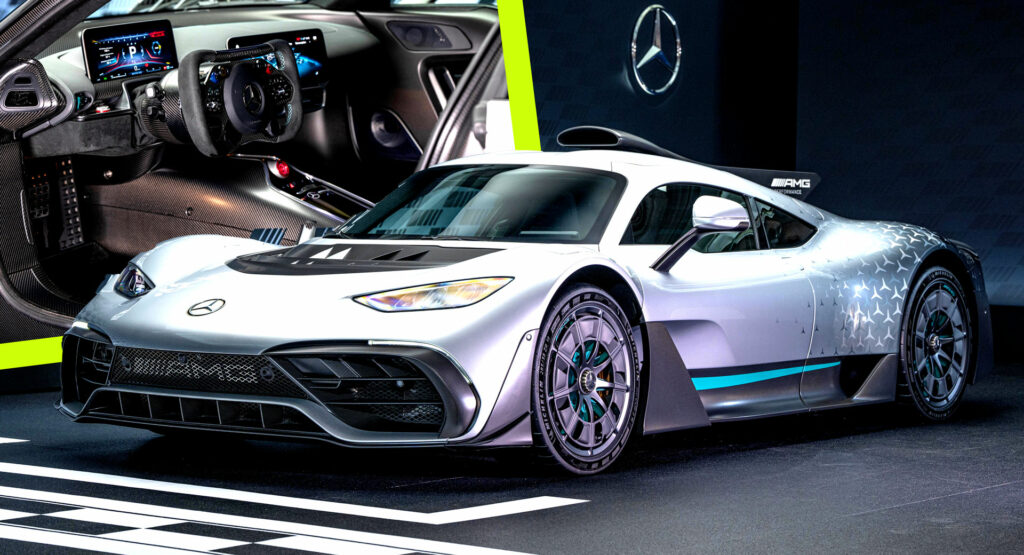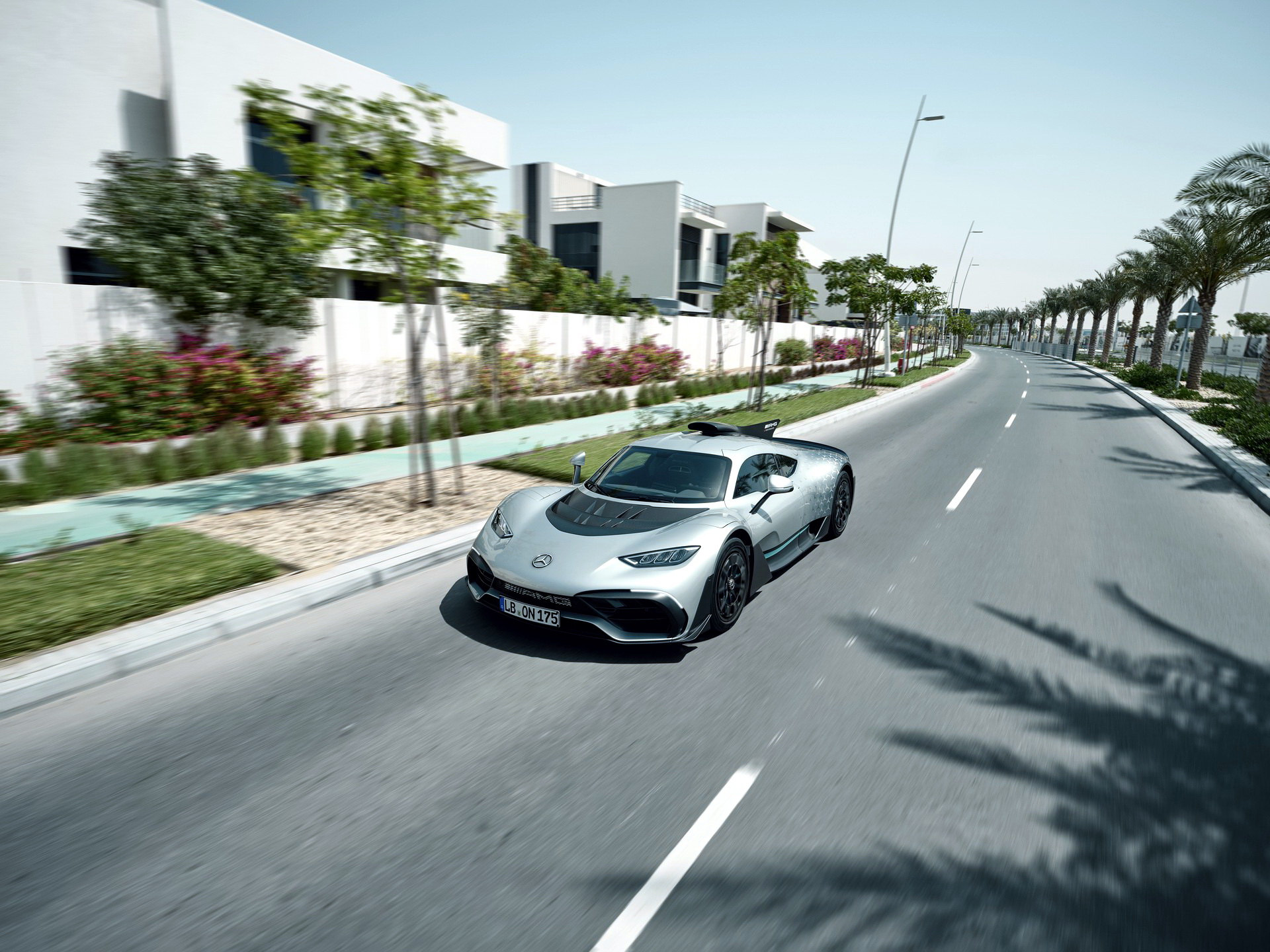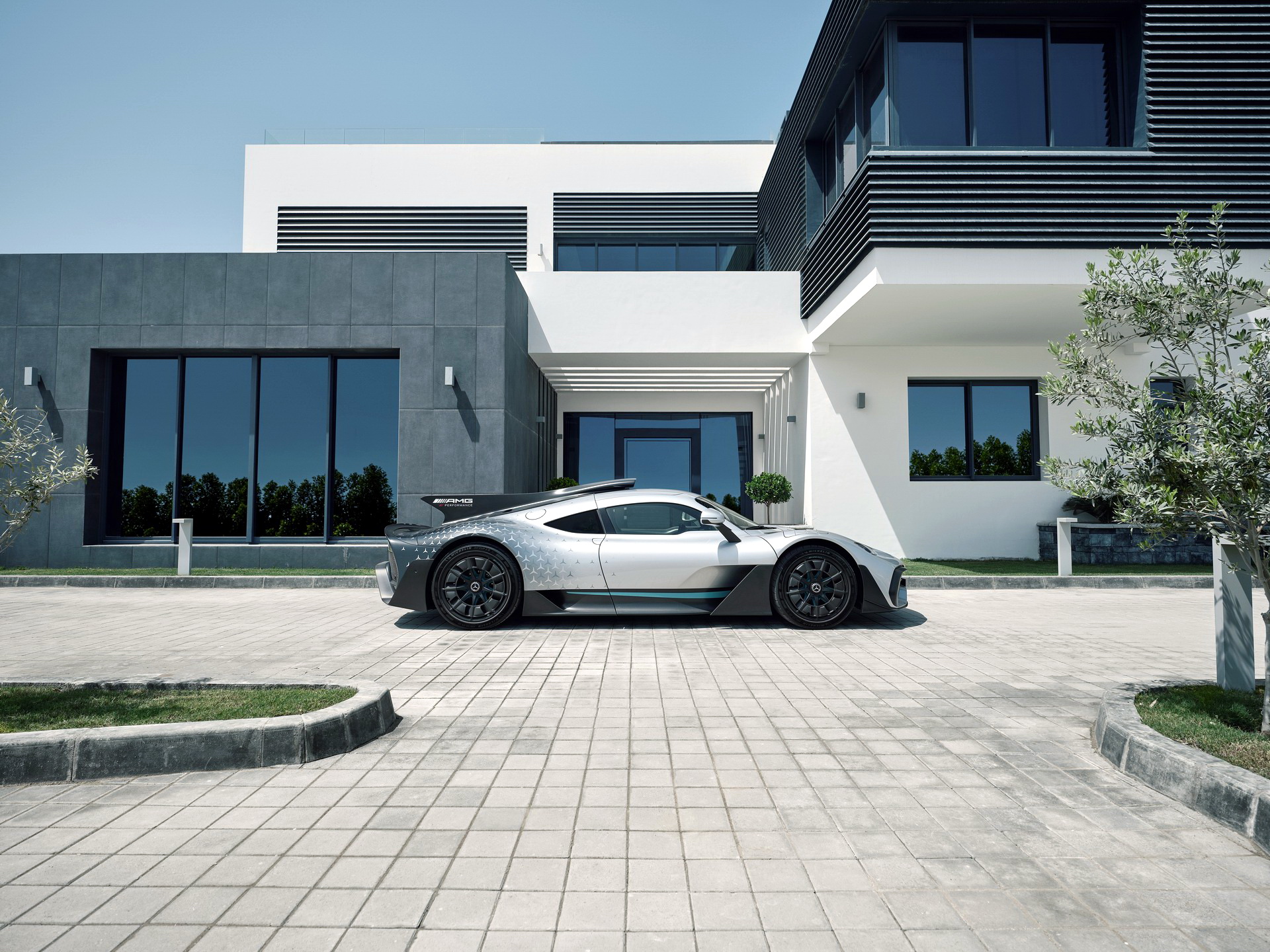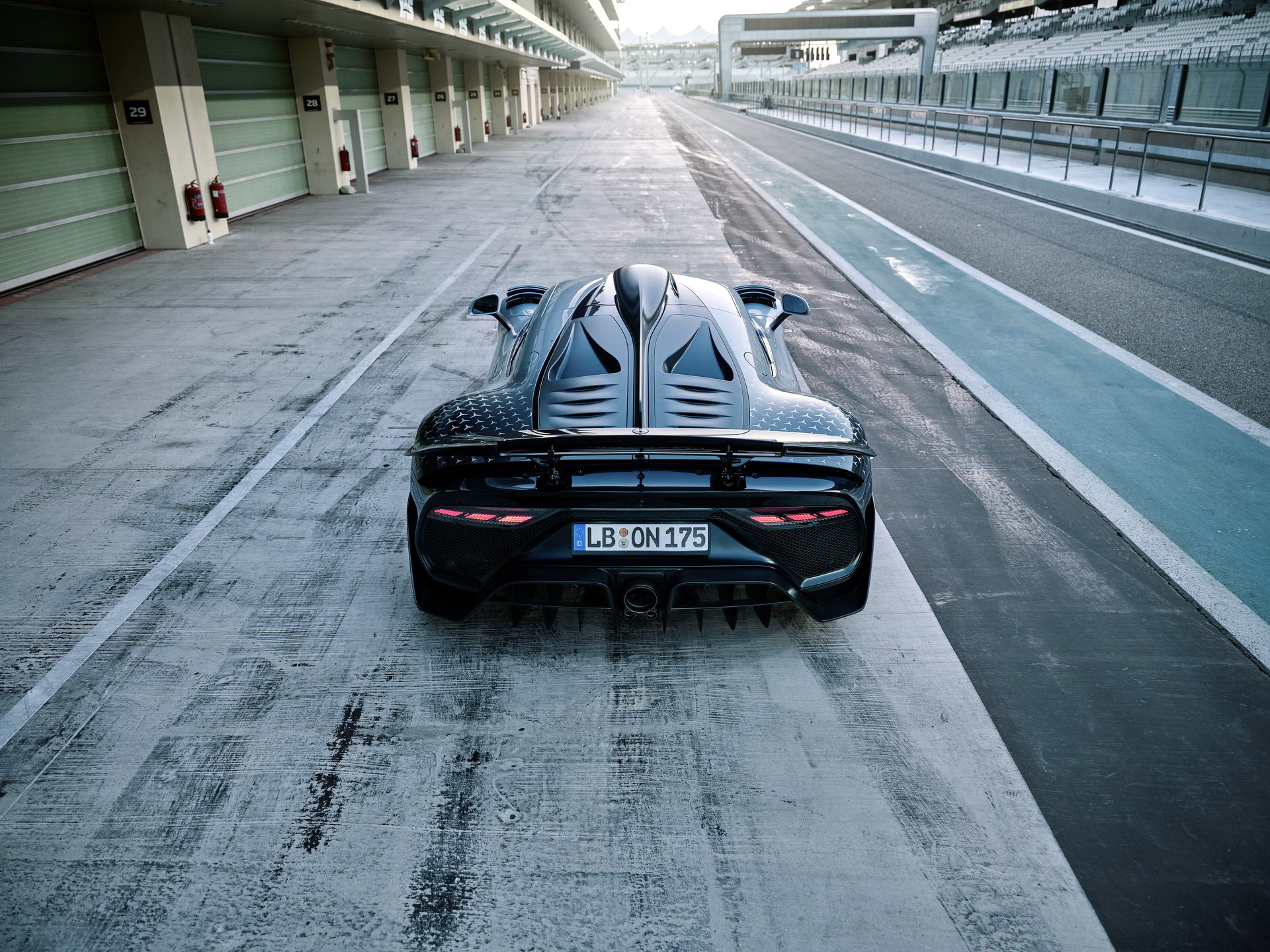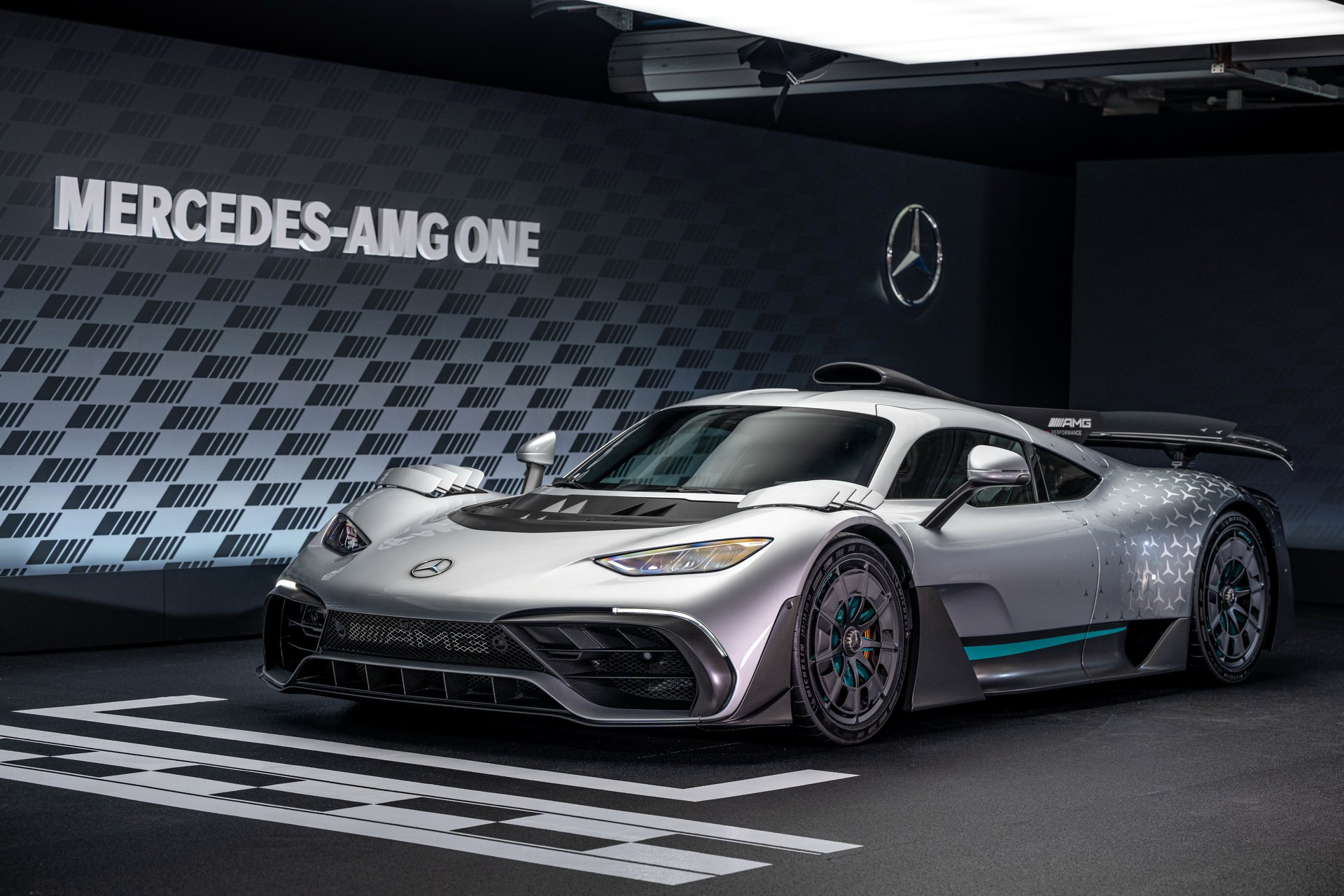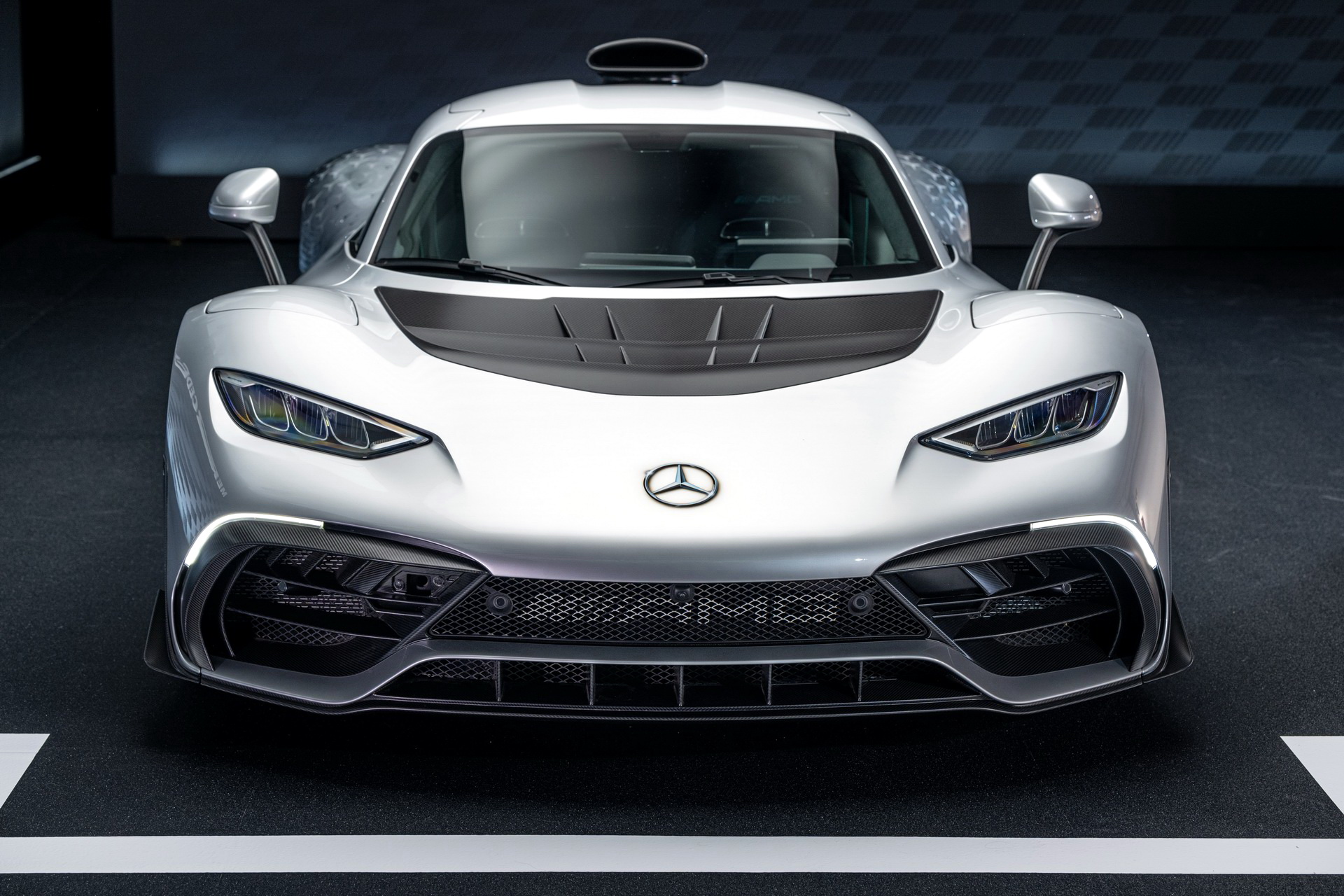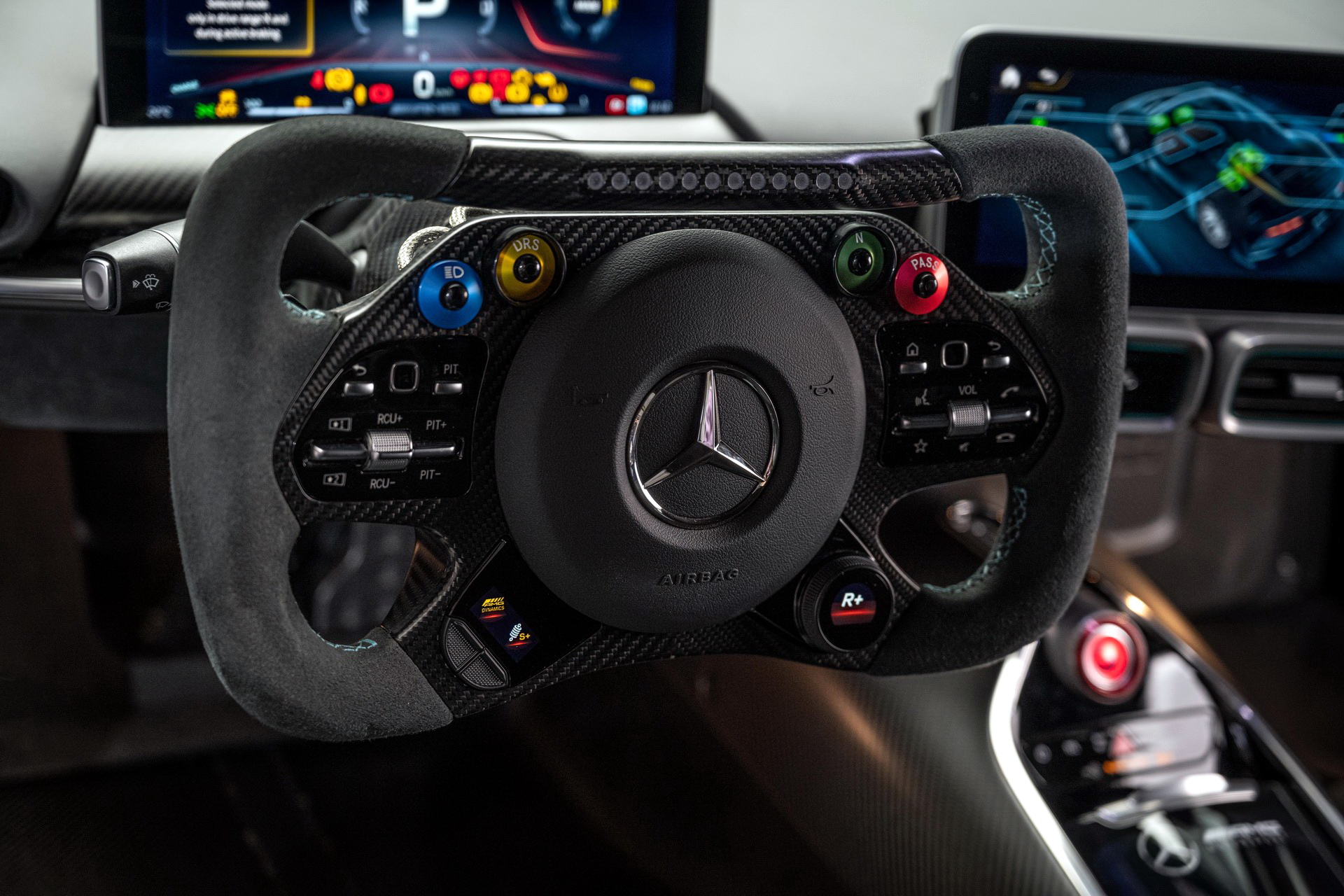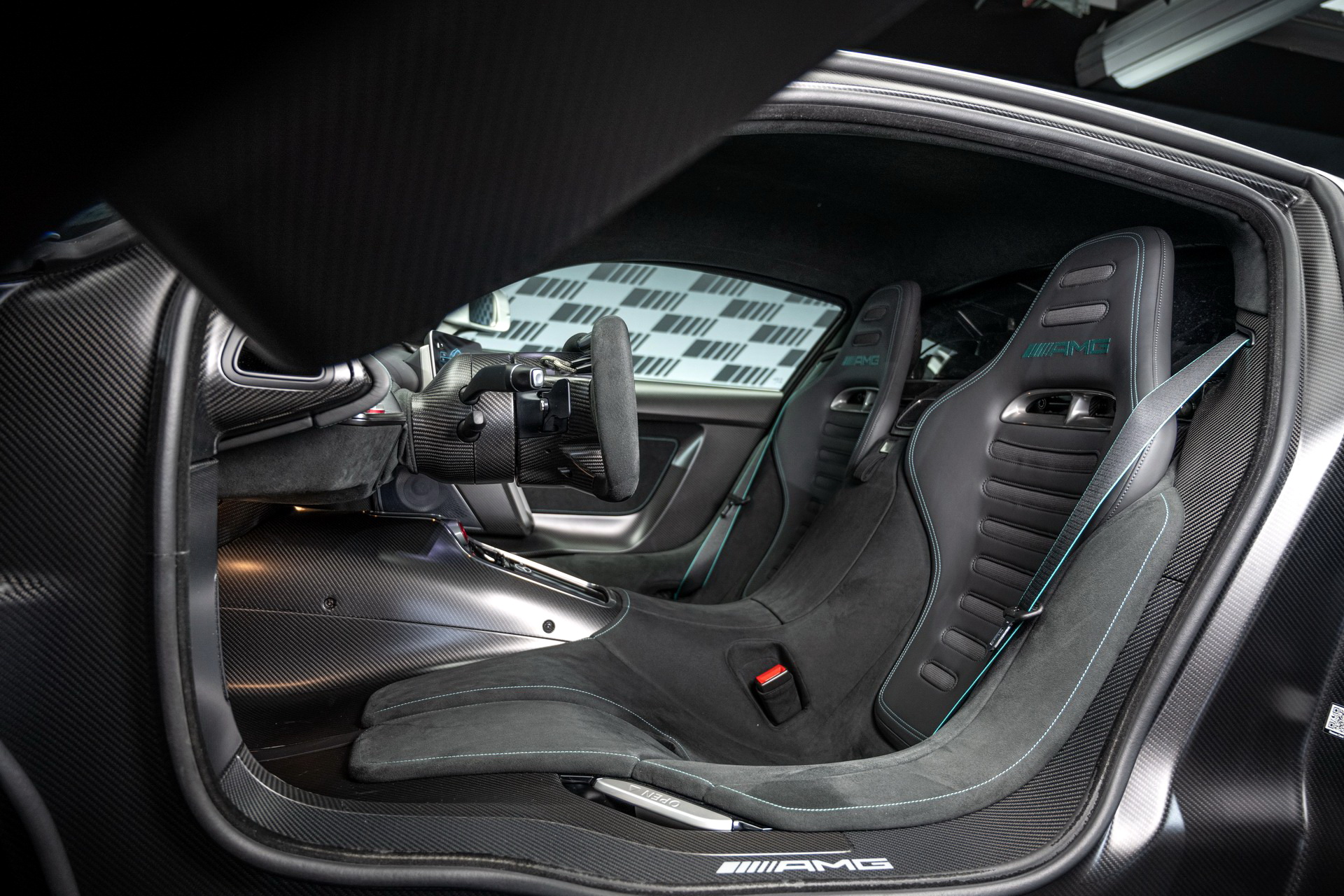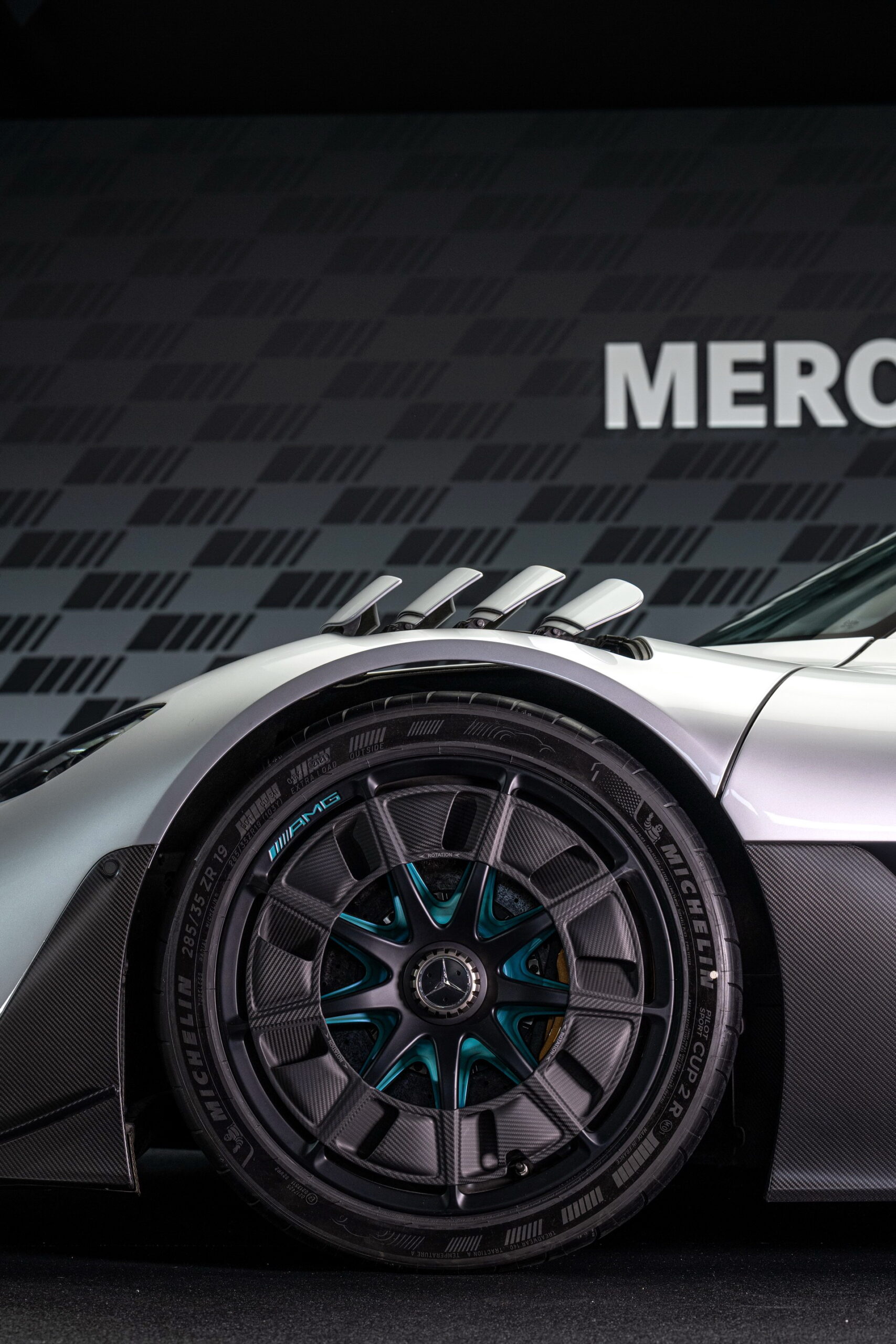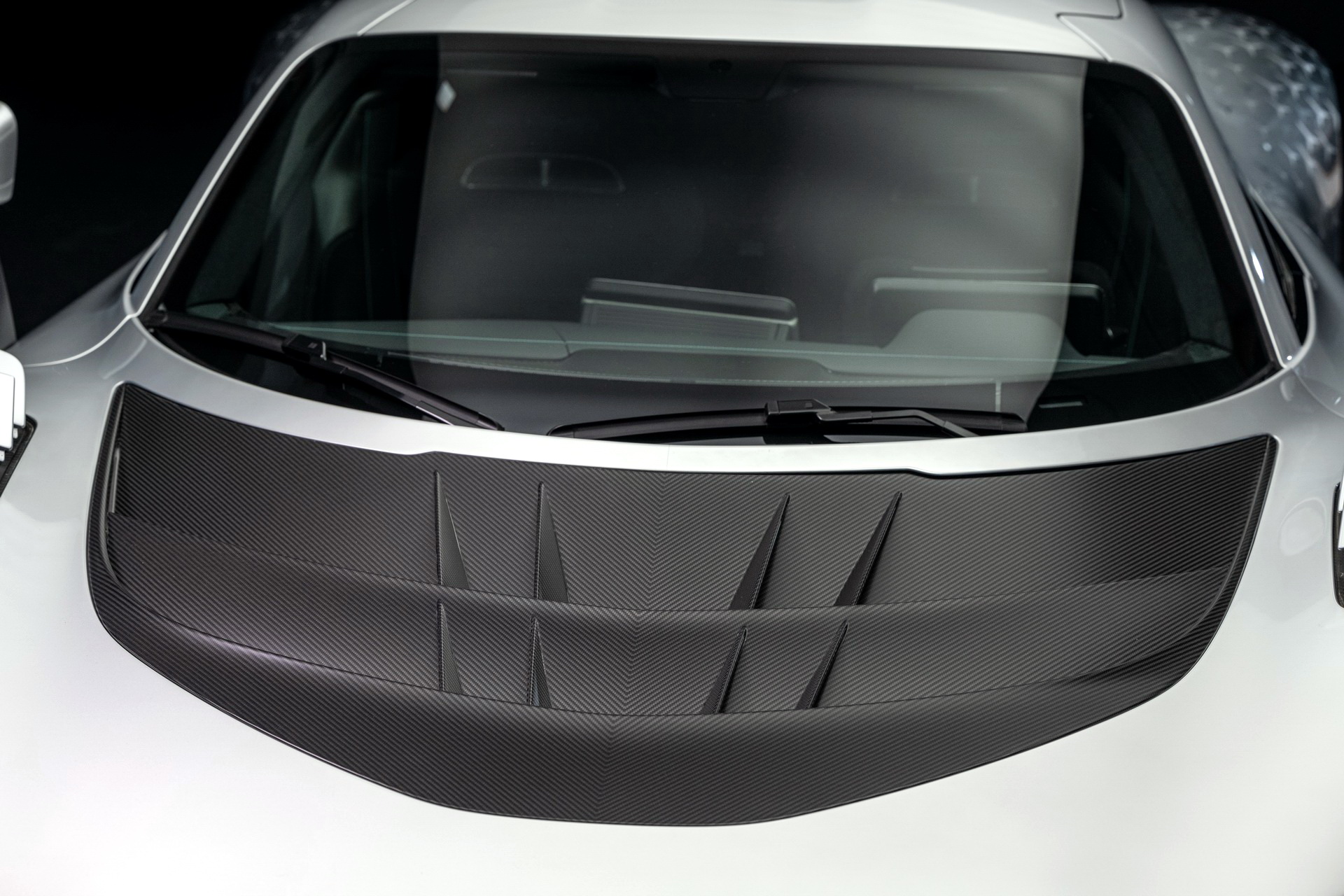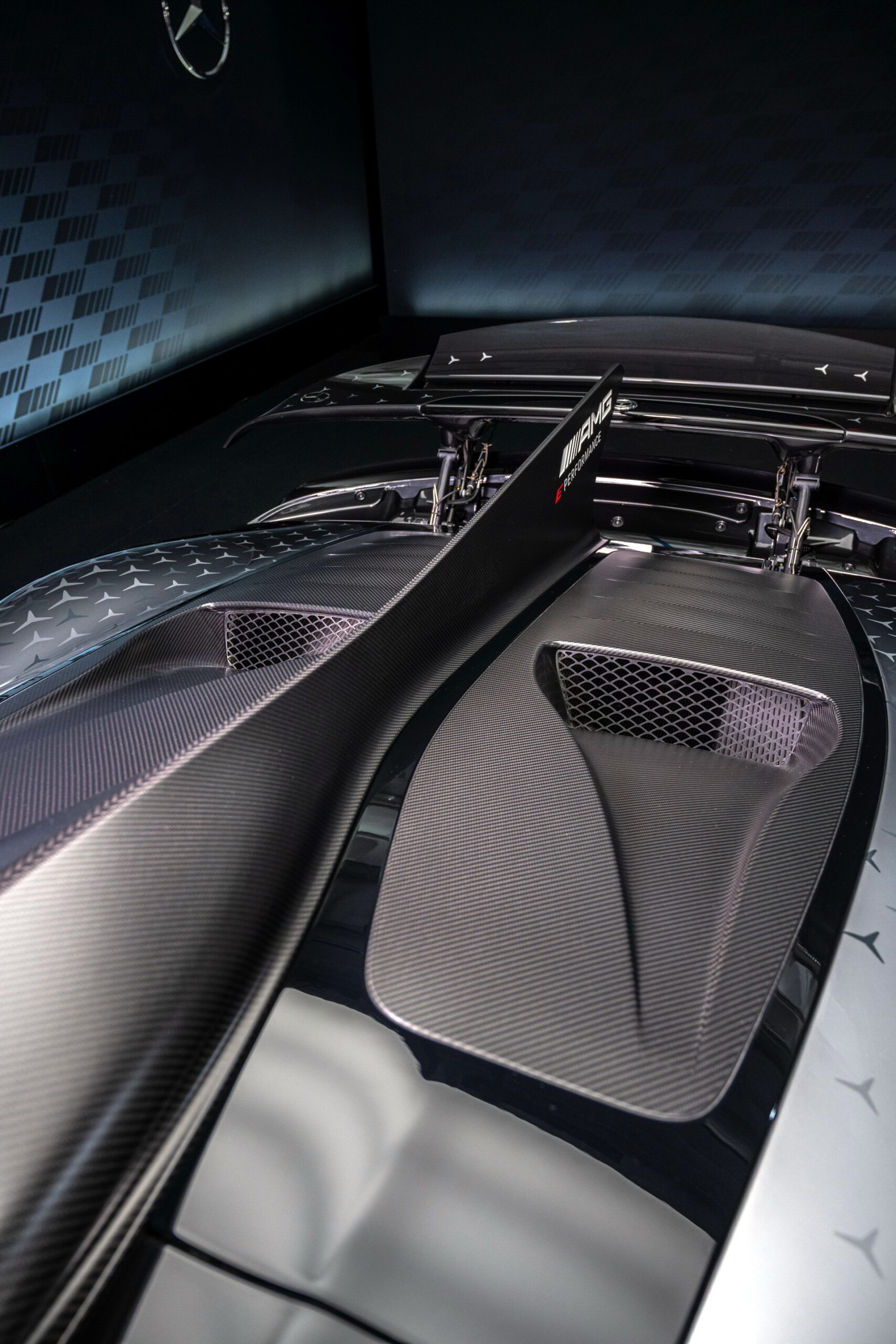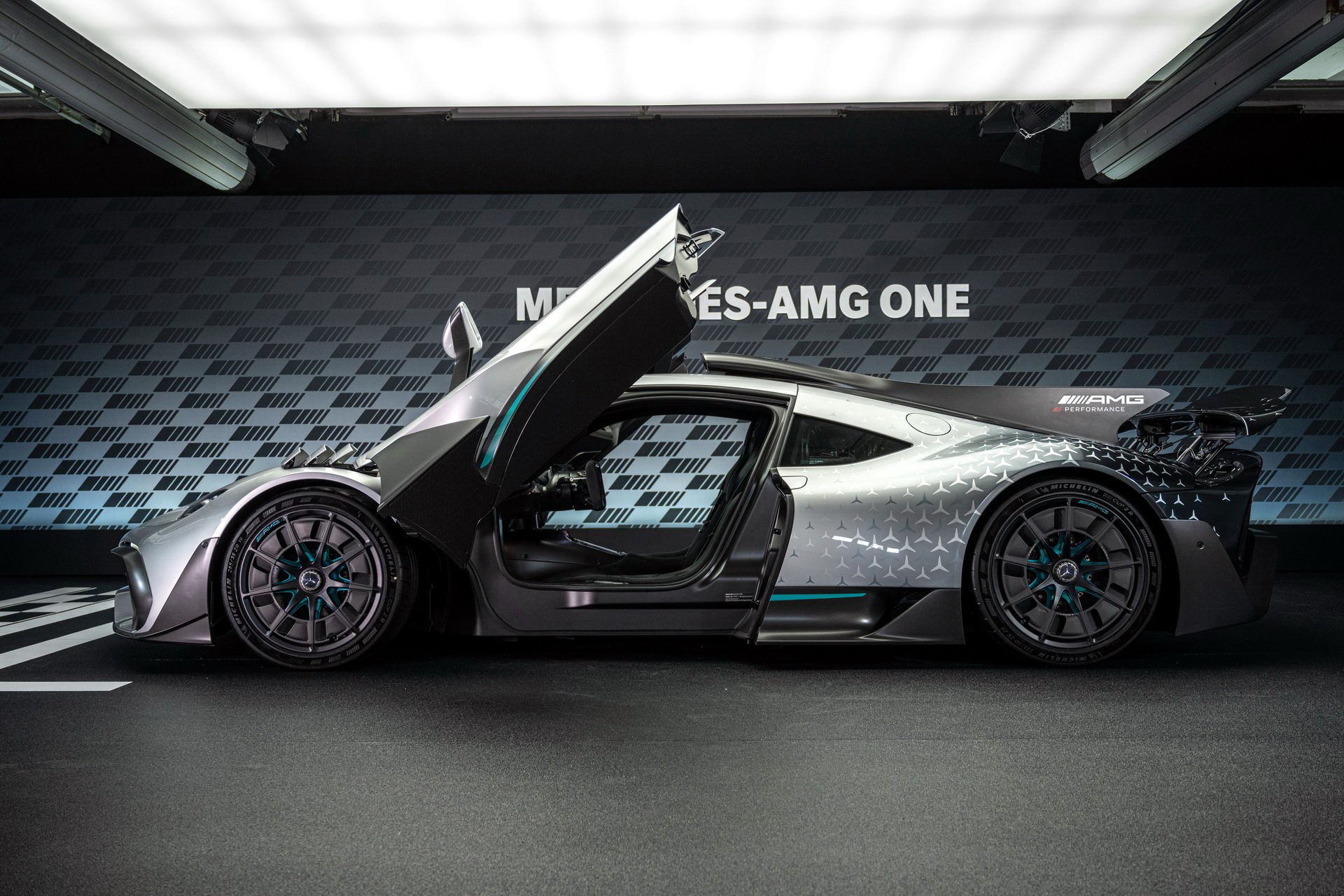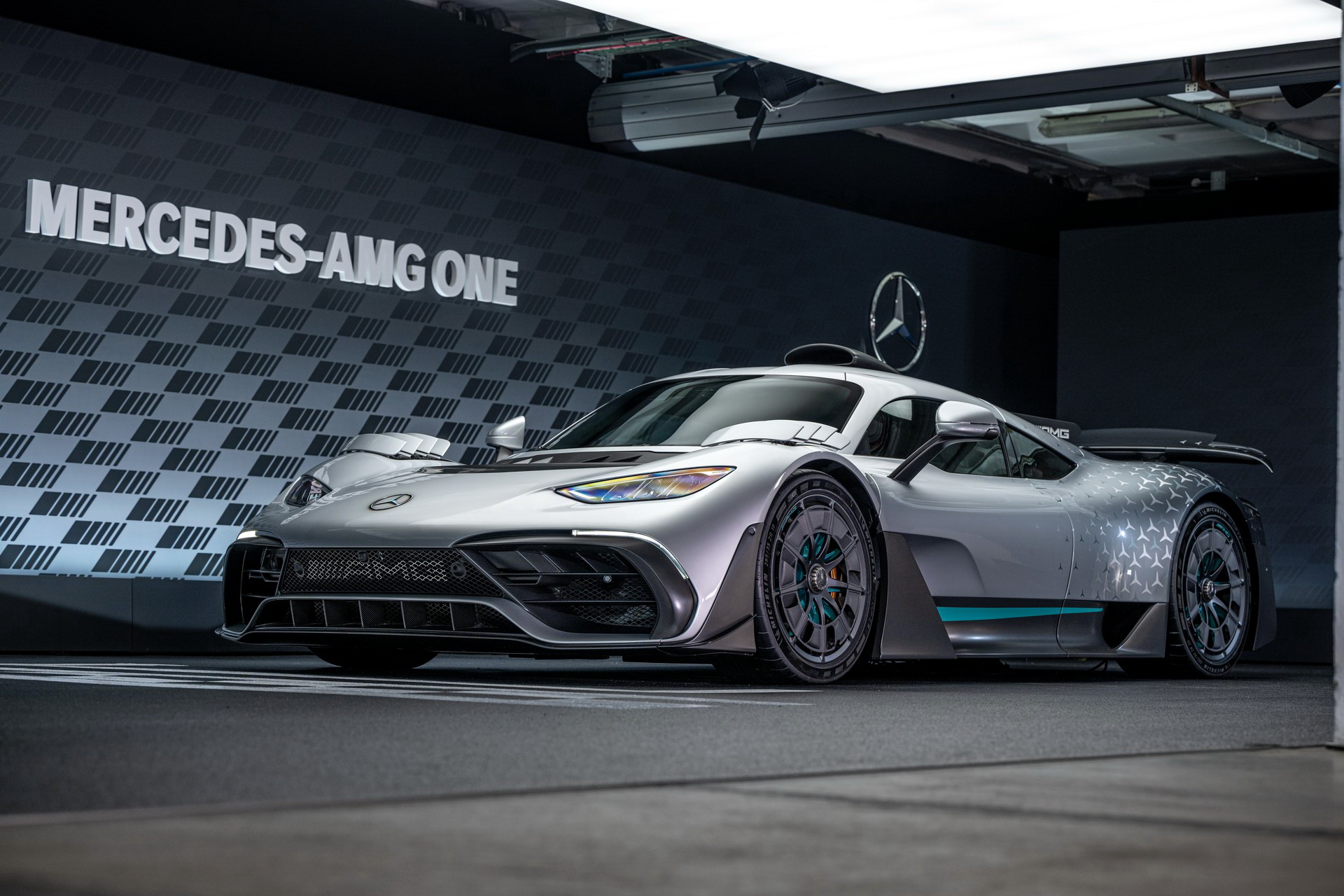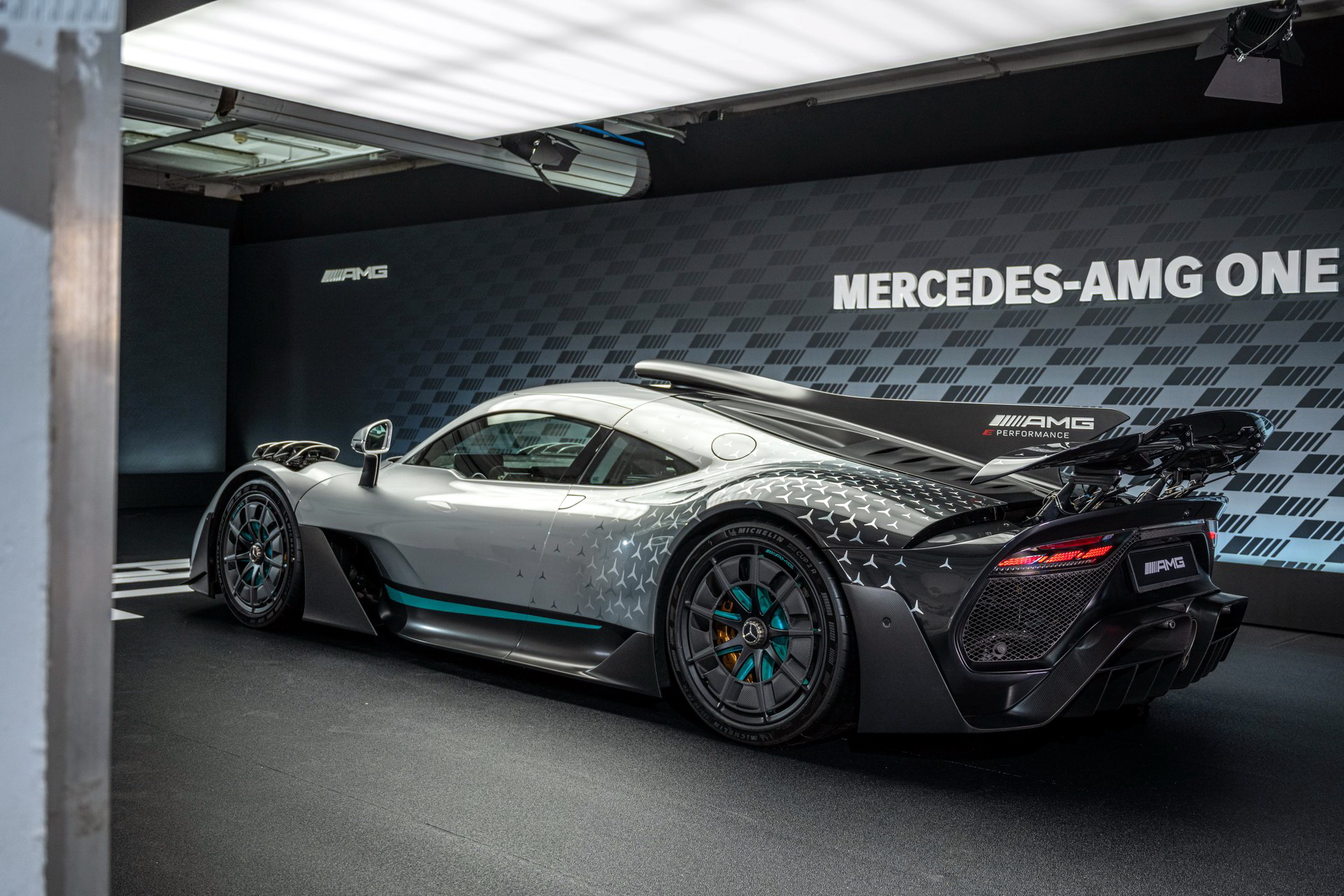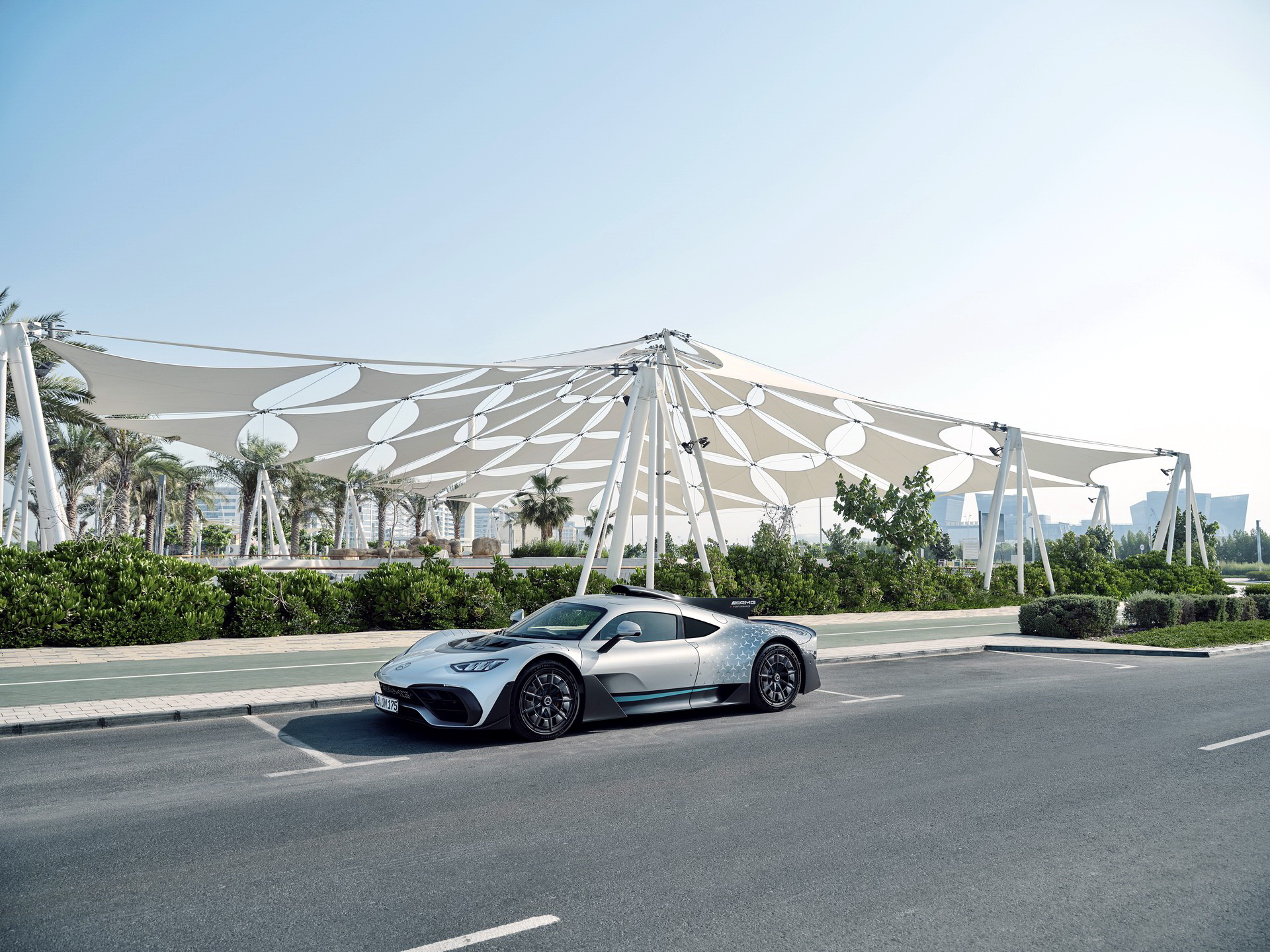Almost five years after the debut of the Mercedes-AMG Project One concept, we finally get to see the Mercedes-AMG One in its final production form. The much-anticipated hypercar from Affalterbach and one of the most successful teams in the history of F1 stays true to the design of the concept while keeping the promise of a motorsport-derived hybrid powertrain with a combined output of 1,049 hp (782 kW / 1,063 PS).
Design And Active Aero Staying True To The Concept
The Mercedes-AMG One looks almost identical to the concept from 2017, retaining the roof scoop integrated within the central fin, the active louvres on the front fenders, the upwards opening doors, and the active rear spoiler. A closer look reveals that the rear end has been slightly redesigned with a more prominent lip above the LED taillights and a few differences on the massive diffuser that houses the F1-inspired triple exhaust pipes. Other changes include the removable carbon-fibre engine covers which are integrating large NACA air intakes and the larger wing mirrors.
See Also: Mercedes Vision AMG Concept Previews Porsche Taycan Electric Sedan Rival Coming In 2025
The most obvious changes have to do with the new 10-spoke forged aluminum wheel featuring an aerodynamic carbon-fiber cover. Those wheels are designed exclusively for the hypercar but in typical Mercedes fashion, there are also the optionally available 9-spoke magnesium forged wheels with a patented bionic design and the same partial cover.
The active, hydraulically controlled aerodynamics can be set in three different settings. “Highway” is for general use with closed louvres, extended front flaps and a retracted rear wing, while “Track” brings up to five times more downforce thanks to the folded front flaps, the opened louvres, the fully extended rear wing, and the lowered suspension by 37 mm at the front and 30 mm at the back. Finally, the “Race DRS” low drag mode reduces downforce by 20 percent with the touch of a button so you can easily overtake your opponents before heading to the next turn. This function is automatically deactivated when the driver hits the brakes or lateral acceleration is detected.
A Street-Legal Monster With F1 Power
The E Performance branded hybrid powertrain with a combined output of 1,049 hp (782 kW / 1,063 PS) comprises an internal combustion engine and four electric motors. The mid-mounted 1.6-liter V6 with an electric turbo, four overhead camshafts, an 11,000 rpm rev limit, direct injection and port injection, is sourced from Mercedes’ F1 single-seater. Just the ICE produces 566 PS (422 kW / 574 PS), which is an immense figure for such a small capacity motor. As for the electric motors, there is one mounted on the crankshaft adding 161 hp (120 kW / 163 PS), another one integrated into the turbocharger that contributes 121 hp (90 kW / 122 PS), and twin motors on the front axle producing a combined 322 PS (240 kW / 326 PS). AMG claims that the response from the hybrid V6 is significantly faster than in a naturally aspirated V8, with the electric turbo enabling higher torque at low rpm.
The rear axle of the hypercar is hybrid with a brand new seven-speed automated manual gearbox integrating a locking differential, while the front axle is exclusively powered by dual electric motors. The AMG Performance 4Matic+ fully variable all-wheel-drive system and the torque vectoring on the front axle provide the best possible traction. Additionally, the front electric motors allow energy recuperation of up to 80 percent during deceleration, helping charge the high-performance lightweight lithium-ion battery which features a direct cooling system. The battery has a capacity of 8.4 kWh and allows an electric range of 18.1 km (11.3 miles) while it can be charged with the integrated 3.7 kW onboard charger.
The driver has access to six drive modes: Race Safe (normal operation prioritizing electric motors), Race (hybrid operation with ICE running continuously retaining the full electric range), EV (zero-emission all-electric mode), Race Plus (hybrid, active aero, lowered chassis with firm tuning), Strat 2 (maximum power and most aggressive chassis setup, only suitable for the race track), and Individual (custom settings). The Race Start function allows a 0-200 km/h (0-124 mph) acceleration in 7 seconds, with AMG not disclosing the 0-100 km/h (0-62 mph) figure. As for the top speed, it is electronically limited to 352 km/h (219 mph).
In order for the motorsport-derived hybrid powertrain to comply with the strict EU6 exhaust emission regulations, Mercedes added four preheated metal catalytic converters, two ceramic catalytic converters, two petrol particulate filters, and a titanium rear silencer.
Ready To Attack The Racetrack
The Mercedes-AMG One is based on a carbon-fiber monocoque chassis featuring aluminum front and rear subframes, while the engine and transmission fulfill load-bearing functions. The coilover suspension has five links and two adjustable suspension struts on each axle. The can be specified in Comfort, Sport, and Sport+ settings, with the latter lowering the front by 37 mm (1.5 inches) and the rear by 30 mm (1.2 inches) benefiting handling and aerodynamics. There is also a front axle lift function for driving over ramps or speed bumps.
The lightweight wheels are shod in bespoke Michelin Pilot Sport Cup 2R M01 tires measuring 285/35 ZR19 at the front and 335/30 ZR20 at the rear. The lightweight AMG carbon-fiber ceramic composite brake system comprises 398 mm (15.7 inches) front discs with six-piston calipers and 380 mm (15 inches) rear discs with four-piston calipers. All four discs are internally ventilated and perforated.
Minimalist Interior
Mercedes designers chose a form-follows-function design for the interior, making sure everything is where it needs to be. The two racing-style seats are merging above the central tunnel, looking like an extension of the carbon-fiber monocoque, while their backs can be adjusted to two positions. The F1-style steering wheel with shift lights and integrated buttons is electrically adjustable and the pedal box and passenger footrest are mechanically adjustable, so you can find your optimum driving position.
Creature comforts include two USB ports, two free-standing 10-inch displays for the digital instrument cluster and infotainment touchscreen, climate vents, and a digital rearview mirror showing real-time footage from the MirrorCam since there is no rear windshield. In terms of materials, exposed carbon fiber is all over the place, combined with Nappa leather and black Dinamica microfiber upholstery and metal accents.
A Bumpy Road To Success
Philipp Schiemer, Chairman of the Board of Management of Mercedes-AMG GmbH, admitted the challenges that they had to go through during the development of the hypercar: “With the Mercedes-AMG ONE, we have more than pushed the envelope. The immense technical challenges of making a modern Formula 1 powertrain suitable for everyday road use have undoubtedly pushed us to our limits”. In the same context, Jochen Hermann, Technical Managing Director of Mercedes-AMG GmbH, added that “This project was partly a curse and a blessing at the same time”, with both executives praising the team for their achievement.
Mercedes-AMG will produce 275 units of the One, and all have already been sold out at a price of $2.72 million each. The hypercar will make its first public outing at the 2022 Goodwood Festival of Speed held in the UK between June 23 and 26. The Mercedes-AMG One will rival the likes of the Aston Martin Valkyrie and the Gordon Murray T.50, both of which come fitted with V12 engines and sport even more track-focused variants, unlike the one-size-fits-all approach of the AMG.




